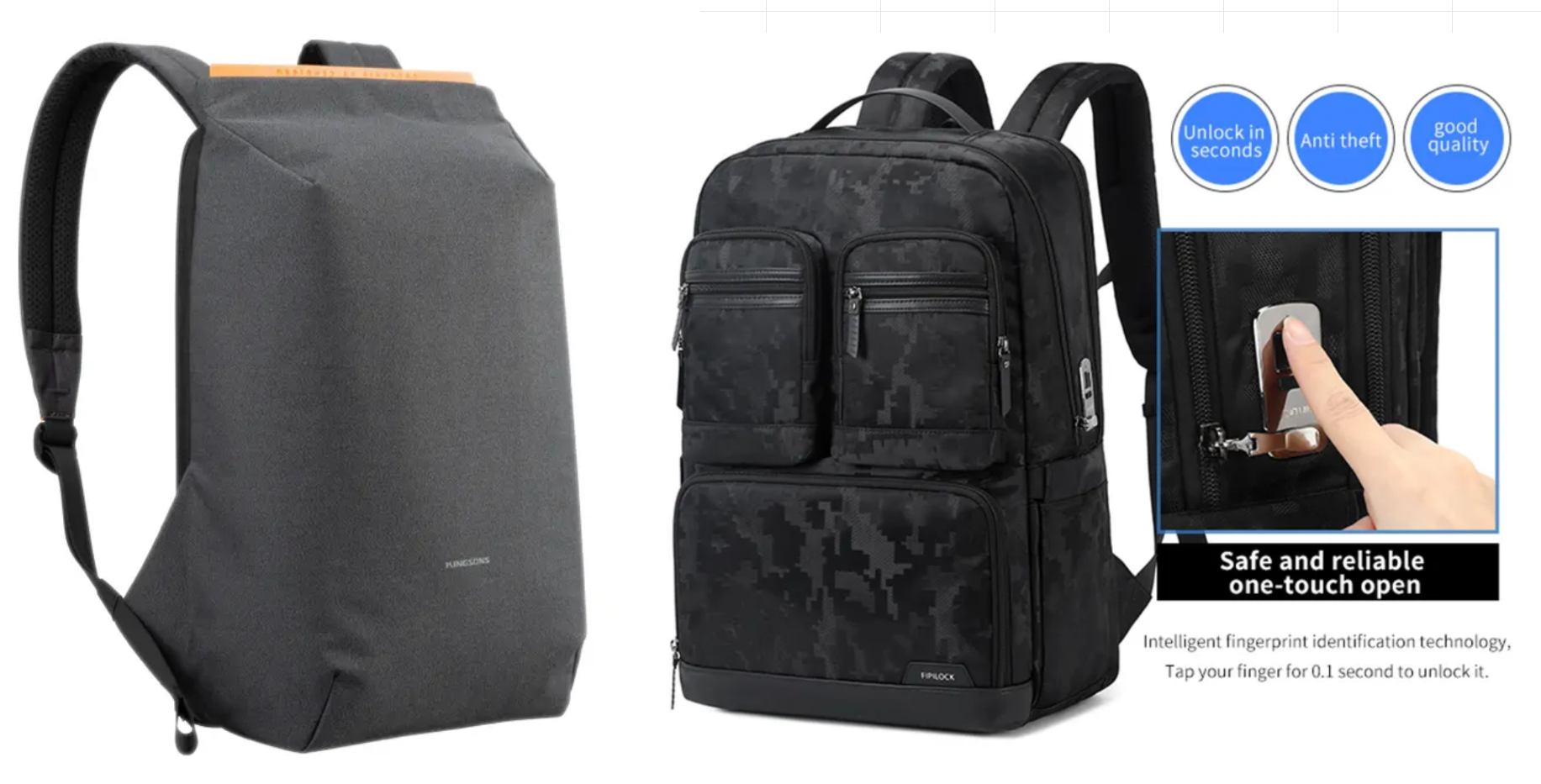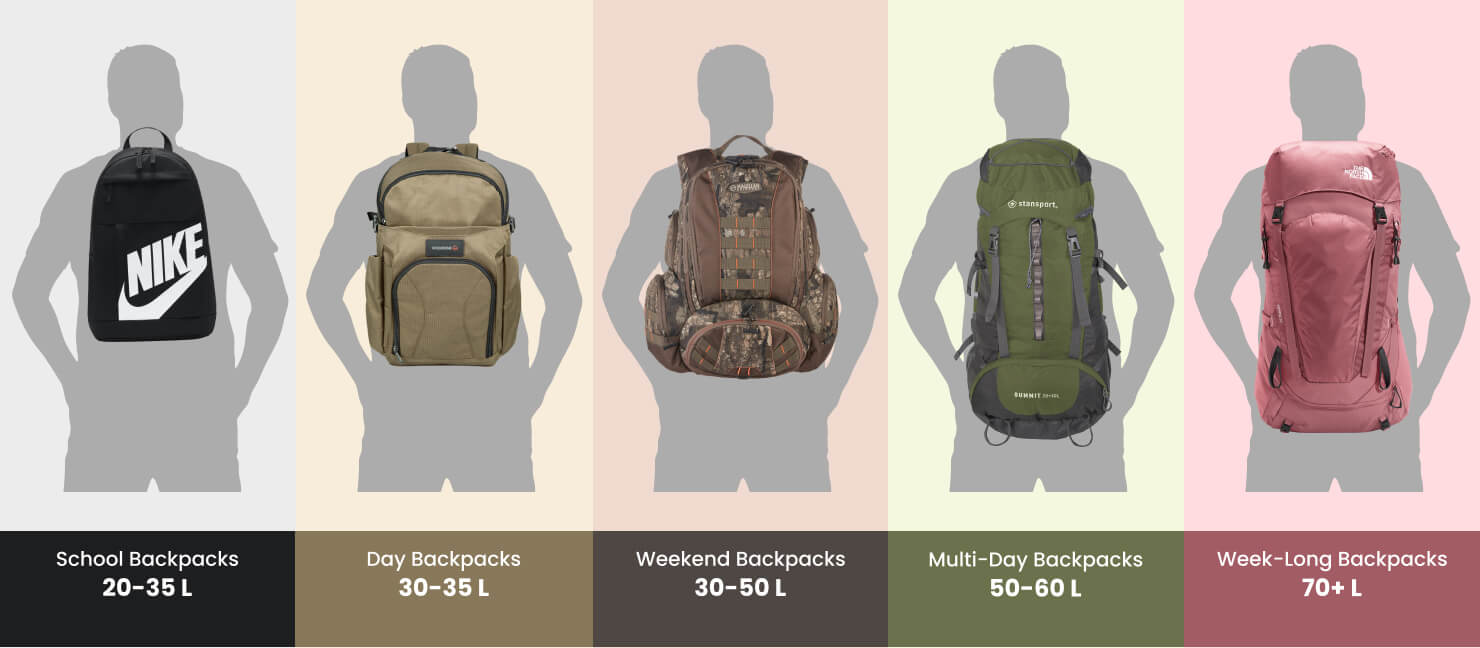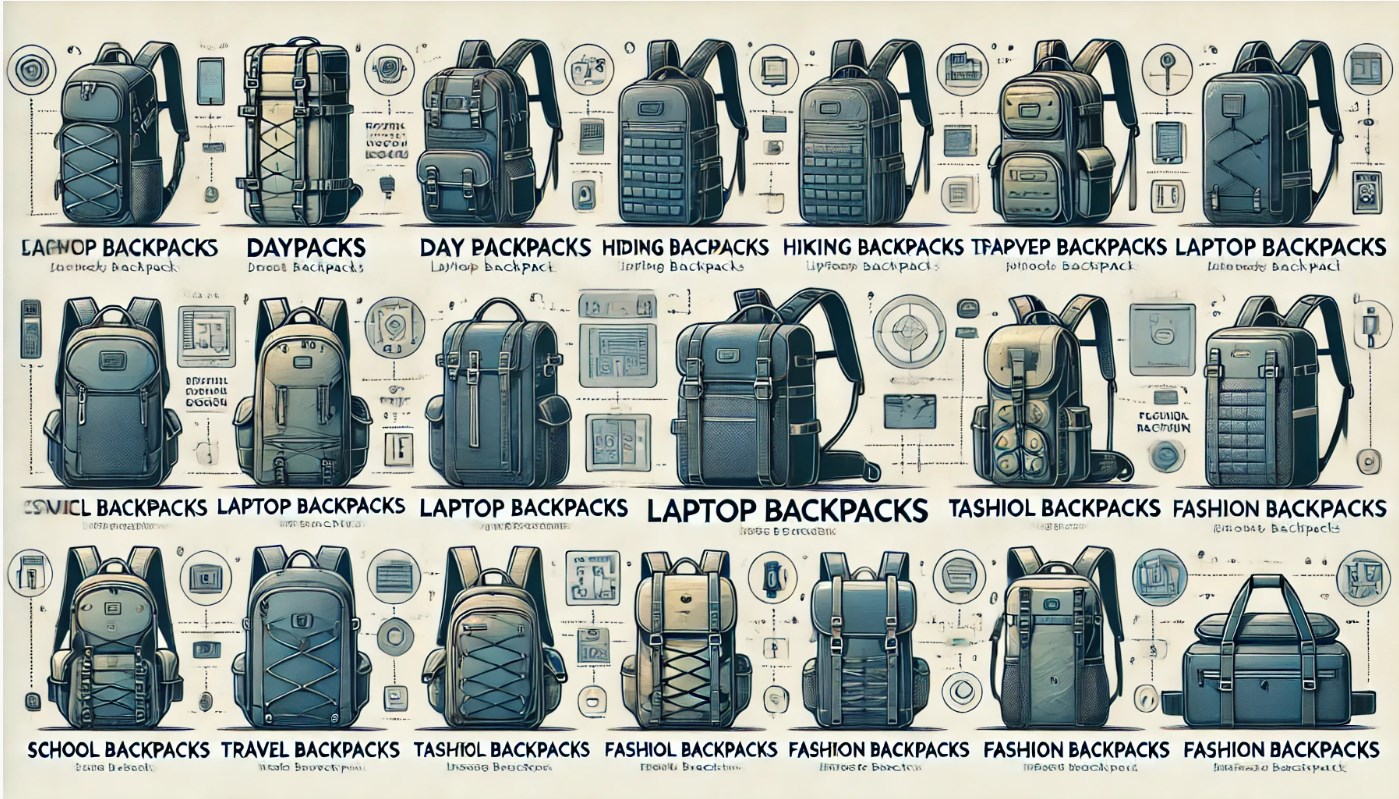From rugged rucksacks to sleek laptop bags, understanding backpack types is key for any brand. Discover 15 essential styles to fit every need and user.

Table of Contents
- Understanding Backpack Fundamentals: What Sets Them Apart?
- Essential Backpack Categories for Daily Use
- Specialized Backpacks for Travel and Adventure
- Niche and Style-Focused Backpack Designs
- Material Deep Dive: Matching Fabric to Function
- What Should Brands Consider When Selecting Backpack Styles?

15 Different Backpack Types Every Brand Should Know About
Understanding Backpack Fundamentals: What Sets Them Apart?
Before delving into specific models, it is crucial to recognize the core elements that define a backpack’s purpose and quality. The anatomy of a bag—from its carrying capacity and material composition to its structural support—dictates its ideal application. These characteristics are not just features; they are foundational to meeting a user’s expectations for comfort, durability, and utility.

Key Differentiators: Capacity, Material, and Frame
A backpack’s utility begins with three primary attributes. Capacity, typically measured in liters, indicates how much the bag can hold. A small 10-20 liter pack is sufficient for daily essentials, while a 50+ liter pack is designed for multi-day treks. The material directly impacts durability, weight, and weather resistance. Common choices range from synthetic fabrics like nylon and polyester to natural materials like canvas and premium full-grain leather. Finally, the frame type—internal, external, or frameless—provides structure and helps distribute weight, a critical factor for comfort during extended use.
Why Choosing the Right Backpack Type Matters for a Brand
For any brand, the selection of backpack styles offered is a direct reflection of its identity and target audience. A company focused on urban professionals will prioritize different designs than one catering to outdoor adventurers. Offering the right mix shows a deep understanding of customer lifestyles. It demonstrates a commitment to providing functional, high-quality solutions that align with their specific needs, whether that’s protecting a laptop during a daily commute or carrying gear up a mountain. This strategic alignment builds trust and brand loyalty.
Essential Backpack Categories for Daily Use
These are the workhorses of the backpack world, designed for commutes, campus life, and everyday errands. Their focus is on organization, accessibility, and blending style with practicality.
1. The Everyday Daypack
The Daypack is the most common and versatile backpack type. It is characterized by its simple, lightweight design and a capacity typically between 20 and 30 liters. With one main compartment and a few smaller pockets, it’s the quintessential choice for students, commuters, and anyone needing to carry daily essentials like a book, a water bottle, and a light jacket. Its frameless construction makes it flexible and easy to store.
2. The Professional Laptop Backpack
Specifically engineered to protect technology, the Laptop Backpack is a non-negotiable for modern professionals and students. Its defining feature is a dedicated, padded sleeve or compartment to secure a laptop and often a tablet. These bags emphasize organization, with multiple pockets for chargers, documents, and accessories. For a more elevated and professional aesthetic, materials like full-grain leather offer a significant upgrade from standard nylon. A Beldtura Leather backpack, for instance, not only protects your devices but also makes a powerful statement about quality and timeless style in a business setting.
3. The Classic Rucksack
A Rucksack is distinguished by its traditional, often vintage-inspired design, featuring a top-loading main compartment typically secured with a flap and straps rather than a zipper. This design heritage gives it a rugged, enduring appeal. Rucksacks are favored for their durability and simplicity, making them popular for both urban exploration and light outdoor activities. Materials like waxed canvas and rich leather are common, enhancing their classic, hard-wearing character.
4. The Minimalist Sling Bag
A Sling Bag is a compact, single-strap pack worn over one shoulder or across the chest. It offers quick access to contents without needing to be fully removed. Ideal for carrying just the essentials—wallet, phone, keys, and perhaps a small tablet—it’s a favorite among city dwellers, cyclists, and tourists who value mobility and a minimalist approach. Its small footprint and ergonomic design make it comfortable for short trips and active use.
5. The Simple Drawstring Bag
Also known as a cinch bag, the Drawstring Bag is the epitome of simplicity. It consists of a single pouch with cord-like straps that pull the top closed when worn. Made from lightweight materials, it is incredibly packable and perfect for carrying gym clothes, a pair of shoes, or other light items. While it offers minimal organization or protection, its convenience and affordability make it a staple for quick, casual use.
Specialized Backpacks for Travel and Adventure
Built for the demands of the road and the trail, these backpacks prioritize capacity, durability, and ergonomic support to carry heavy loads over long distances comfortably.
6. The Globetrotting Travel Backpack
Designed as a modern alternative to suitcases, the Travel Backpack often features a front-loading, clamshell-style opening that allows for easy packing and access to the entire main compartment. Capacities range from 35 to 55 liters, fitting carry-on requirements or accommodating longer trips. Key features include stowaway straps for checking the bag, compression straps to secure contents, and robust construction to withstand the rigors of transit.
7. The Rugged Hiking Backpack
A Hiking Backpack is a highly technical piece of gear engineered for outdoor performance. It features an internal or external frame to distribute weight to the hips, a padded hip belt, and adjustable shoulder straps for a customized fit. These packs include specialized features such as hydration reservoir sleeves, trekking pole loops, and multiple exterior pockets for easy access to gear on the trail. Their design is focused entirely on comfort and functionality during long treks.
8. The Tactical & MOLLE Backpack
Originally designed for military use, the Tactical Backpack is prized for its extreme durability and modularity. Its most prominent feature is the MOLLE (Modular Lightweight Load-carrying Equipment) webbing system—rows of heavy-duty nylon stitched onto the pack for attaching compatible pouches and gear. This customization makes it popular among survivalists, first responders, and anyone needing a highly organized and rugged bag.
9. The Hydration Pack
A Hydration Pack is a small, streamlined backpack designed around a water reservoir, or “bladder,” with a drinking tube that extends over the shoulder. This allows for hands-free hydration, making it essential for cyclists, runners, and hikers. While its primary function is carrying water, it usually includes a small amount of storage for essentials like keys, a phone, and an energy bar.
10. The Camera Backpack
For photographers, a Camera Backpack is a mobile studio. The interior is filled with customizable padded dividers to securely hold camera bodies, lenses, drones, and other fragile equipment. These packs offer superior protection against impact and weather, often featuring quick-access side panels so a photographer never misses a shot. The design balances security with rapid accessibility.
Niche and Style-Focused Backpack Designs
This group includes backpacks that solve specific problems or cater to unique style preferences, showcasing the innovation within modern bag design.
11. The Secure Anti-Theft Backpack
Built for peace of mind in crowded urban environments, the Anti-Theft Backpack incorporates security features to deter pickpockets. Common elements include slash-proof materials, hidden zippers, secret pockets located against the wearer’s back, and RFID-blocking compartments to protect credit cards and passports from digital theft.
12. The Convertible Backpack Tote/Briefcase
The Convertible Backpack is a master of versatility, designed to transform its function. It features straps that can be reconfigured or hidden, allowing it to be carried as a backpack, a shoulder tote, or a professional briefcase. This adaptability makes it an excellent choice for individuals whose days transition from a casual commute to a formal business meeting.
13. The Rolling Backpack
Combining the mobility of a backpack with the ease of a rolling suitcase, the Rolling Backpack features a retractable handle and wheels. It provides the option to carry it on your back or roll it along the ground, making it ideal for students with heavy textbooks, business travelers navigating airports, or anyone looking to reduce strain on their shoulders and back.
14. The Foldable/Packable Backpack
Made from ultra-lightweight, durable materials, the Packable Backpack can be folded or compressed into its own small pouch. This makes it an excellent secondary bag for travelers who anticipate needing extra storage for souvenirs or day trips. Despite its featherlight construction, it’s surprisingly resilient for carrying light loads.
15. The Clear/Transparent Backpack
The Clear Backpack is designed to meet security regulations at stadiums, concert venues, and certain schools. Made from transparent PVC or vinyl, it allows security personnel to see the contents at a glance, speeding up entry processes. While its use is highly specific, it serves an important function in security-conscious environments.
Material Deep Dive: Matching Fabric to Function
The material of a backpack is its soul, defining its look, feel, and lifespan. A brand’s choice of material is a statement about its commitment to durability, style, or sustainability. Understanding these differences is vital.
| Material | Key Characteristics | Best For |
|---|---|---|
| Full-Grain Leather | Extremely durable, develops a unique patina over time, professional and timeless aesthetic. | Professional laptop bags, premium daypacks, travel bags where style is paramount. |
| Nylon (Ripstop/Ballistic) | Lightweight, highly durable, and resistant to tearing and abrasion. Often water-resistant. | Hiking backpacks, travel backpacks, high-performance daypacks. |
| Polyester | Inexpensive, resistant to UV degradation, and holds color well. Less durable than nylon. | Everyday daypacks, drawstring bags, school bags. |
| Canvas | Heavy-duty, traditional material. Can be waxed for water resistance. Strong and rugged. | Rucksacks, vintage-style daypacks, totes. |
For brands like Beldtura Leather, choosing full-grain leather is a deliberate decision. It’s not just about creating a bag; it’s about crafting an heirloom. Leather offers unparalleled longevity and a character that synthetic materials cannot replicate, aligning perfectly with a brand identity centered on quality craftsmanship and enduring value.
What Should Brands Consider When Selecting Backpack Styles?
Choosing which backpack types to develop or sell requires a strategic approach. It’s about more than just following trends; it’s about building a coherent and desirable product line that resonates with a specific market.
Identifying Your Target Audience
Who is your ideal customer? Is it the digital nomad, the college student, the weekend warrior, or the corporate executive? Answering this question is the first step. A deep understanding of your audience’s daily routines, needs, and aspirations will dictate whether you should focus on laptop protection, carrying capacity, ruggedness, or high-fashion aesthetics. A successful lineup directly addresses the problems and desires of its intended users.
Aligning with Brand Identity
Your products are an extension of your brand’s story. A brand built on luxury and craftsmanship should offer sophisticated designs made from premium materials like leather. A brand focused on sustainability might prioritize backpacks made from recycled materials. A performance-oriented brand must focus on technical features and cutting-edge fabrics. Ensure every backpack style you offer reinforces your core brand message and values.
Focusing on Functionality and Unique Selling Propositions
In a crowded market, differentiation is key. What makes your backpacks stand out? It could be a unique organizational system, a proprietary anti-theft feature, superior ergonomic comfort, or a commitment to using exceptionally high-quality materials. Focus on developing features that provide genuine value and solve a real problem for your target audience. This functional superiority, combined with a strong brand identity, is what turns a simple bag into a must-have product.



